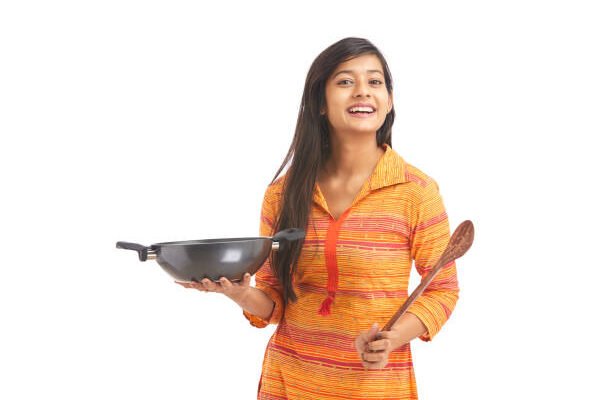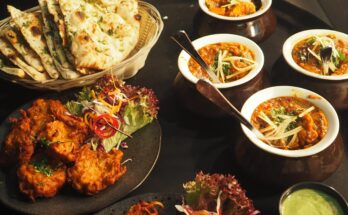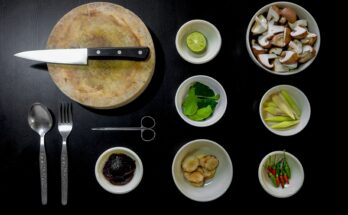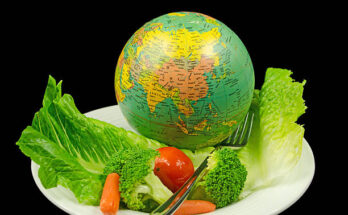Cooking is not just a necessity; it’s an art form that has evolved over centuries, influenced by diverse cultures, ingredients, and innovations. Whether you’re a novice in the kitchen or a seasoned chef, understanding various cooking techniques is essential for mastering the craft of culinary preparation. From sautéing and roasting to sous-vide and fermenting, each technique offers a unique way to transform raw ingredients into delicious, well-balanced dishes. In this comprehensive guide, we will delve into the world of cooking techniques, exploring their history, principles, and practical applications. By the end of this journey, you’ll have a deeper appreciation for the culinary arts and the skills to take your cooking to the next level.
-
Sautéing
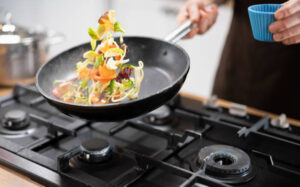 (Photo from iStock)
(Photo from iStock)
History: Sautéing, derived from the French word “Sauter” (to jump), involves cooking small pieces of food in a minimal amount of fat over high heat.
Principle: Sautéing relies on rapid heat transfer and direct contact between the food and the hot cooking surface. The high heat quickly sears the food, locking in its natural juices, flavors, and nutrients.
Application: Sautéing is perfect for vegetables, small pieces of meat or poultry, and seafood. The key is to maintain constant motion to prevent burning, ensuring an even sear and maintaining the food’s texture and color.
-
Roasting
History: Roasting is one of the oldest cooking techniques, dating back to ancient civilizations that roasted food over open flames or on hot stones.
Principle: Roasting involves cooking food in an oven or over an open flame. The high, dry heat envelops the food, creating a beautifully browned exterior and a juicy, tender interior.
Application: Roasting is perfect for meats, poultry, vegetables, and even fruits. It imparts a rich, complex flavor and is often accompanied by seasonings, herbs, and aromatic ingredients.
-
Boiling
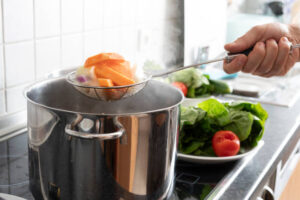
History: Boiling is a fundamental cooking technique with ancient origins. Early humans boiled food using water heated with hot stones.
Principle: Boiling involves immersing food in rapidly bubbling water at or near 100°C (212°F).
Application: Boiling is suitable for pasta, rice, vegetables, eggs, and various grains. It’s also the foundation of creating stocks, broths, and soups.
-
Steaming
History: Steaming has been practiced for centuries in Asian cuisine, particularly in Chinese cooking, where bamboo steamers were used.
Principle: Steaming involves cooking food by exposing it to steam.
Application: Steaming is ideal for preserving the color, flavour, and nutrients of delicate ingredients like seafood, vegetables, and dumplings. It is a healthy cooking technique, as it doesn’t require additional fats or oils.
-
Grilling
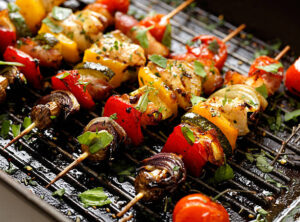 (Photo from iStock)
(Photo from iStock)
History: Grilling is a cooking technique with a long history, going back to the early days of fire.
Principle: Grilling is the process of cooking food over an open flame, typically using a grill or barbecue. The direct heat sears the food, creating distinct grill marks and a smoky flavour.
Application: Grilling is perfect for meat, poultry, seafood, vegetables, and even fruits. It’s a beloved cooking method during summer barbecues and outdoor gatherings.
-
Baking
History: Baking is an ancient technique, with evidence of ovens dating back to ancient Egypt.
Principle: Baking involves cooking food by surrounding it with dry, indirect heat inside an enclosed space, like an oven. The even heat distribution allows for consistent cooking and browning.
Application: Baking is used for bread, pastries, cakes, casseroles, and more. It transforms raw dough and batter into fluffy, golden creations.
-
Frying
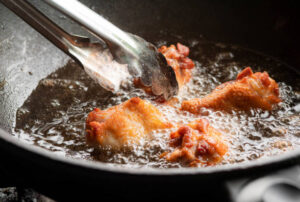 (Photo from iStock)
(Photo from iStock)
History: Frying has been practiced for centuries, with various forms of deep frying and shallow frying appearing in different cultures.
Principle: Frying involves submerging food in hot oil or cooking it in a shallow pool of oil. The high temperature quickly crisps the exterior while sealing in moisture and flavour.
Application: Frying is used for foods like French fries, donuts, tempura, and fried chicken. There are two main types of frying: deep frying (submerging food in oil) and shallow frying (cooking food with a smaller amount of oil).
-
Braising
History: Braising has a long history, with ancient civilizations using slow-cooking methods to tenderize tougher cuts of meat.
Principle: Braising combines both dry and wet cooking methods.
Application: Braising is ideal for tougher cuts of meat, such as pot roast and short ribs, as well as vegetables. Indeed, the slow, gentle cooking process yields tender, melt-in-the-mouth results.
-
Sous-Vide
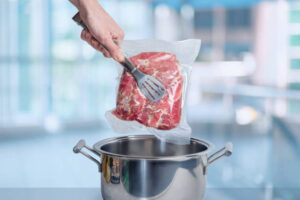 (Photo from iStock)
(Photo from iStock)
History: Sous-vide, meaning “under vacuum” in French, was developed in the mid-20th century as a method for preserving the flavour. Especially, the texture of food during cooking.
Principle: Sous-vide involves vacuum-sealing food in plastic bags and cooking it in a precisely controlled water bath at a low and constant temperature. Moreover, this method ensures even cooking and precise control over the final texture.
Application: Sous-vide is used for a wide range of ingredients, from steak and chicken to eggs and vegetables.
-
Fermentation
History: Fermentation is one of the oldest food preservation and flavour-enhancing techniques. Furthermore, with evidence dating back thousands of years to civilizations like the Egyptians and Chinese.
Principle: Fermentation is a microbial transformation of food. Beneficial microorganisms, such as yeast, bacteria, and moulds, break down carbohydrates and other organic compounds in food, producing alcohol, lactic acid, and other by-products. Subsequently, this process can preserve, flavour, and transform the texture of ingredients.
Application: Fermentation is used in producing a wide range of foods and beverages, including bread, cheese, yogurt, pickles, sauerkraut, and kombucha. Evidently, it introduces unique flavors and textures to culinary creations.
Conclusion
Culinary mastery involves more than just following recipes; it requires a deep understanding of the various cooking techniques at your disposal. Each technique offers a unique approach to transforming raw ingredients into delectable dishes, and the knowledge of when and how to apply them can elevate your cooking to an art form. From sautéing to fermenting, these techniques provide a rich tapestry of flavors, textures, and aromas to explore in your culinary journey. Embracing the diversity of cooking techniques opens the door to endless possibilities. And allows you to create extraordinary dining experiences. Eventually, get into the kitchen, experiment, and savour the delights of cooking, as you embark on a voyage through the captivating world of culinary arts.
Reference
Want to know tips for meal prep, click on the link below:
https://theperfectblogger.com/how-to-do-your-meal-prepping-routine-at-home-everyday/

